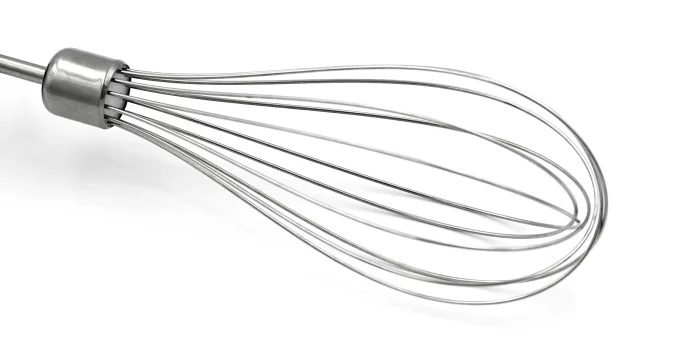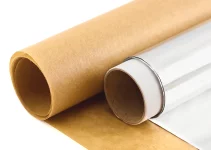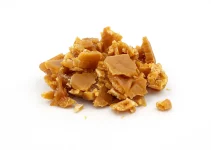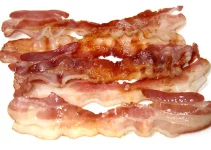It will be interesting answering the question what can I use instead of a whisk because we’ll discover that we can use quite a few different tools as a substitute for a whisk.
However, in the end you’ll have to decide which tool works best depending on what you’re whisking.
For example, we can totally say that we can beat egg whites with a fork instead of a whisk but would that many people actually do it? If your arm strength is above average, you might succeed in actually creating stiff peaks by just using a fork.
On the other hand, many of us believe that nothing beats a whisk when making egg whites that end up as stiff peaks for our desserts. And, when that whisk is attached to a mixer, everything is perfect because we don’t have to any work and the stiff peaks are done in a short time.
Table of Contents
What Can I Use Instead Of a Whisk? 7 Perfect Alternatives
Given the fact that I don’t use a whisk powered by my hand to beat anything more complicated than a few eggs for an omelet, which only takes a few seconds, you can probably guess that I’m a big fan of using some sort of kitchen appliance to beat ingredients.
I’m going to talk about kitchen tools that you can use and you won’t have to pay anything extra if that’s what you decide to use but I’m also going to be talking about kitchen appliances that quickly whisk ingredients for us in the most perfect way.
What you decide to use, it’s up to you.
1. Use two forks instead of whisk
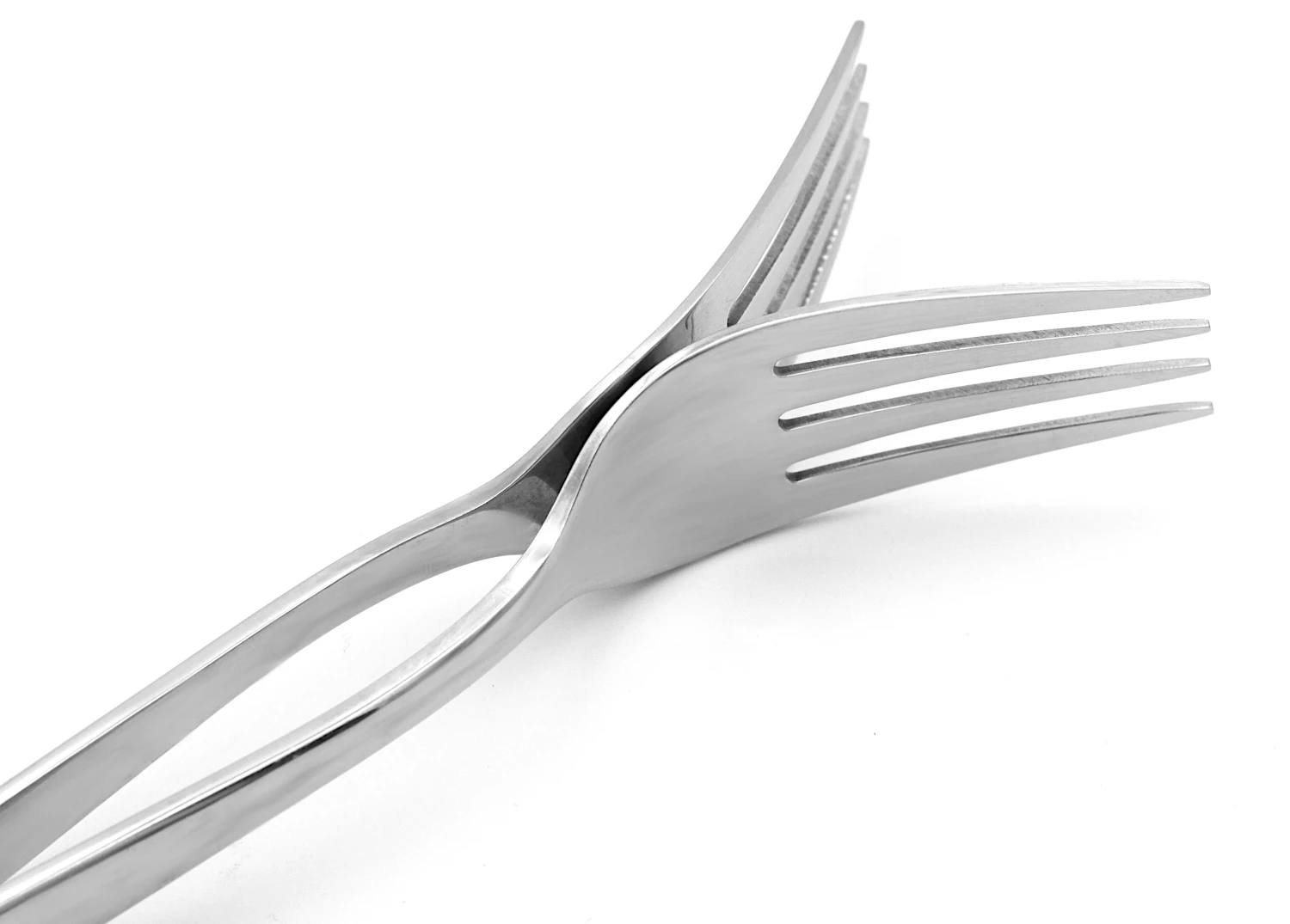
If you’re going to pose the question what can I use instead of a whisk, the most frequent answer is going to be to use a fork or two forks.
It’s recommended to use two forks because whisking adds in air when we’re beating ingredients like egg whites or when we’re making whipped cream.
Thus, we should tap together two forks. Obviously, the two forks need to be identical because they’re practically placed one on top of the other. So they need to align from one end to another.
Place the two forks one on top of the other, make sure to get them perfectly aligned.
Place a small piece of folded paper between the handles of the forks to create a bit of space between the tines. We need to create this space between the tines in order to bring air into the mixtures.
Use tape to keep the handles and the paper towel in a fixed position and you’re good to go.
Do you need to use two forks if you’re just beating a few eggs for an omelet? Not really. You can just use a fork and if your movements are fast and powerful and lift up the eggs to incorporate the air, then that’s all you need.
You really don’t need two forks taped together with a bit of paper towel between them if you’re simply making an omelet.
On the other hand, if you want to whip egg whites without any kind of appliance, use this two forks method.
But expect some serious pains in your arm and maybe the desire to give up after a minute or two. I would give up in under 30 seconds so good luck with that.
2. Use a single fork to whisk ingredients
If you only have one fork, then you can use a single fork.
Although, I would say that the thing that I explained with using two forks imitates a whisk and its actions to incorporate air much better.
It’s totally possible to use a fork instead of a whisk in many situations but it depends if you’re willing to actually choose this option or not.
I personally wouldn’t because I get tired after just beating the eggs for an omelet with a fork.
I totally don’t have the arm strength and the patience required to beat egg whites with a fork until I get stiff peaks and I can turn the bowl upside down above my head.
Thus, in theory, I can definitely answer the question what can I use instead of a whisk by saying that you can use a fork or two forks.
On the other hand, in practice I wouldn’t do it. But I figure that you can give it a try if you want and you absolutely don’t have any other appliance that you could use.
3. Use a pair of chopsticks
For those who are more comfortable with using chopsticks than forks, that’s exactly what they should use.
In fact, it might actually turn out that using chopsticks is better than using a fork.
Chopsticks might enable us to handle eggs more gently, which can work well when we’re beating eggs for an omelet.
Chopsticks are also great when we’re making scrambled eggs. You can choose to use chopsticks instead of a spatula because they help break down the coagulated proteins into small curds when we’re cooking scrambled eggs.
However, use wooden chopsticks if you’re cooking in a non-stick pan. Metal chopsticks will scratch your pan terribly.
However, I prefer the French style of beating my eggs for an omelet so I’ll stick to using a fork but those who prefer chopsticks will definitely manage to do a wonderful job for fluffy perfect omelets.
Would I recommend using chopsticks to beat egg whites or to make whipped cream? Not really.
Once again, the problem with using tools like these is that it takes such a long time until we achieve the mixture we want. If your dominant hand can take the strain, then you can go ahead.
4. Egg beater hand crank style
If, for whatever reason, you don’t want to buy a hand mixer, there’s another solution.
It’s so much better than the tools I’ve mentioned above as an answer to the question what can I use instead of a whisk.
Frankly, if you can’t buy an appliance, I recommend getting a manual egg beater. It’s still not my ideal substitute for a whisk but it can totally work.
A good egg beater is still going to cost around $20 or slightly more so don’t go thinking that just because we’re not using a hand mixer is going to be a lot cheaper. You can totally buy a hand mixer for about the same price.
Egg beaters are perfect for eggs, light batters, whipped cream, etc.
You can use an egg beater hand crank style to beat egg whites until stiff and you’re not going to scream in pain.
It’s the perfect substitute for a whisk or the perfect substitute for appliances like hand mixers or stand mixers.
Egg beaters are one of my favorites when it comes to somewhat beating ingredients manually.
It’s also a good tool to have around if you’re going camping. Who says that you can’t have whipped cream when you’re going camping?
Moreover, hand held beaters are a good option if you live somewhere where the possibility of not having electrical power from time to time exists.
They’re also a perfect choice for children who want to try their hand at making desserts. I wouldn’t entrust a child with a stand mixer but hand held beaters are perfectly amazing for their little hands. The crank won’t pose any difficulties.
Last but not least, the beaters detach from the handle and they’re very easy to clean. They’re dishwasher safe. Washing by hand only takes a few seconds.
5. Hand mixer: perfect whisk substitute
Frankly, my favorite answer to the question what can I use instead of a whisk is to use a hand mixer.
They’re great for people who are on a budget because we can get a decent hand mixer for about $20 or so.
Of course, there are a few models who go for about $50, like the KitchenAid Hand Mixer or a model from Cuisinart. Or maybe you’ll be interested in a model that costs more than $100, like the Breville Hand Mixer.
Besides those exceptions, in general, hand mixers are affordable kitchen appliances that can do everything we want them to do. We can even knead dough to make bread, pizza and other baked goods with some hand mixers.
They’re versatile kitchen appliances.
Another reason to prefer hand mixers is that they don’t take up much space. These are not bulky kitchen appliances that need a permanent space on your countertop, like it’s the case with stand mixers.
If you’re an amateur baker and desserts maker on a budget, hand mixers work as some of the best whisk substitutes to have in a kitchen.
We can make meringue in about 5-10 minutes with a hand mixer. It’s just a matter of getting the sugar to dissolve, which will happen pretty quickly.
If we want soft peaks it will probably take up to 5 minutes but if we want stiff peaks it can take a bit longer, about 8-9 minutes.
Making whipped cream is a matter of minutes and it’s very easy to do.
We can also make mayonnaise. But you don’t need a hand mixer to make an omelet. For that easy job, just use a single fork or a pair of chopsticks.
Whatever mixture you want to do, a hand mixer is good to go.
6. Stand mixer
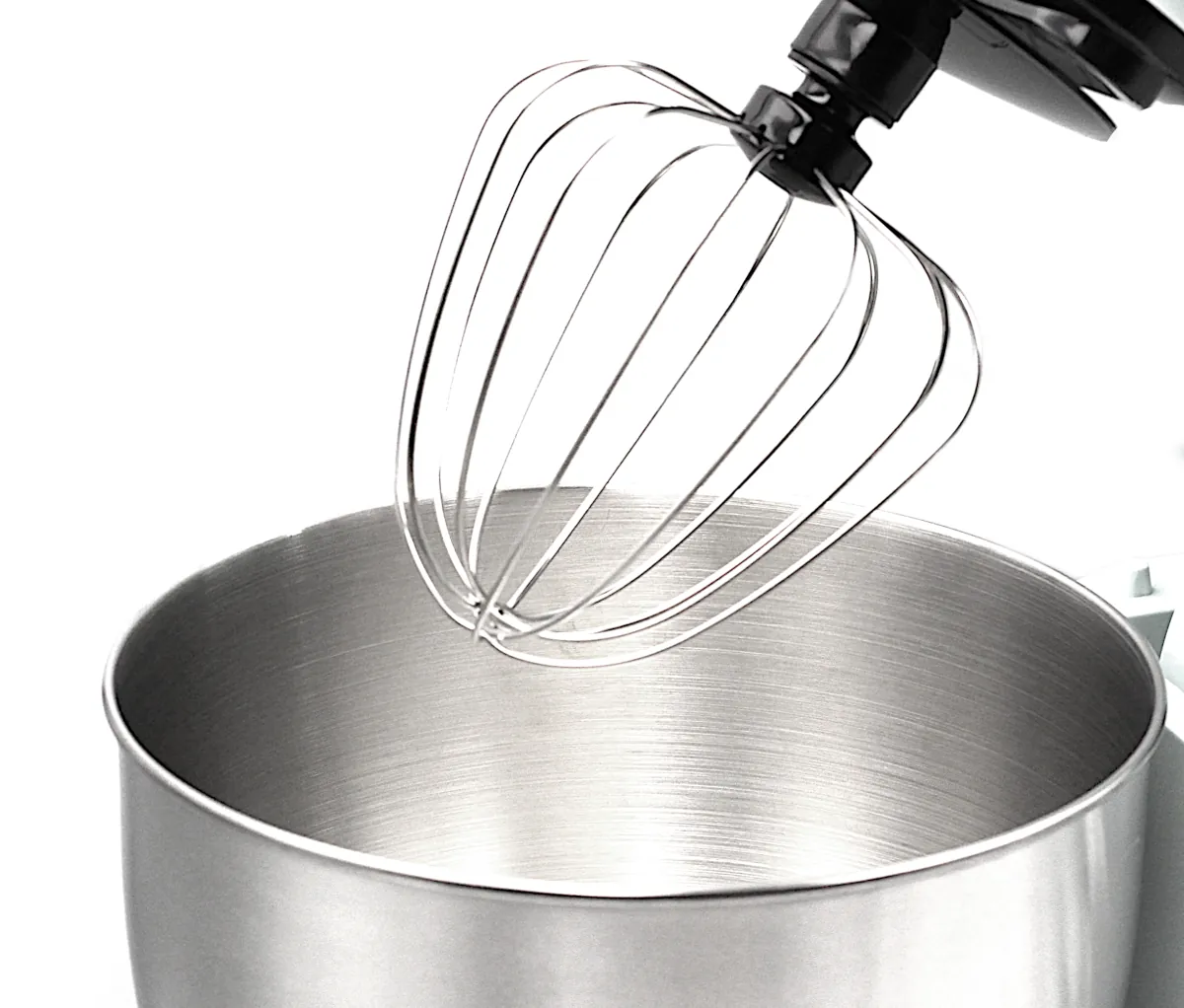
Of course, who could forget about mentioning stand mixers when we’re talking about kitchen appliances that work as whisk substitutes?
Stand mixers come with a very big whisk attachment. They also come with their own bowl and they practically do all the work for us.
We just have to add the ingredients according to the recipe we’re making.
Besides a big, sturdy whisk attachment, stand mixers also include a flat beater and dough hooks.
There are just two inconveniences with choosing a stand mixer: they’re expensive and they’re appliances that take up quite a bit of countertop space.
However, if you’re truly passionate about making desserts, savory dishes, and a lot of baked goods including bread, then you’re going to want to invest in a stand mixer to use for years to come.
7. Immersion blender with a whisk attachment
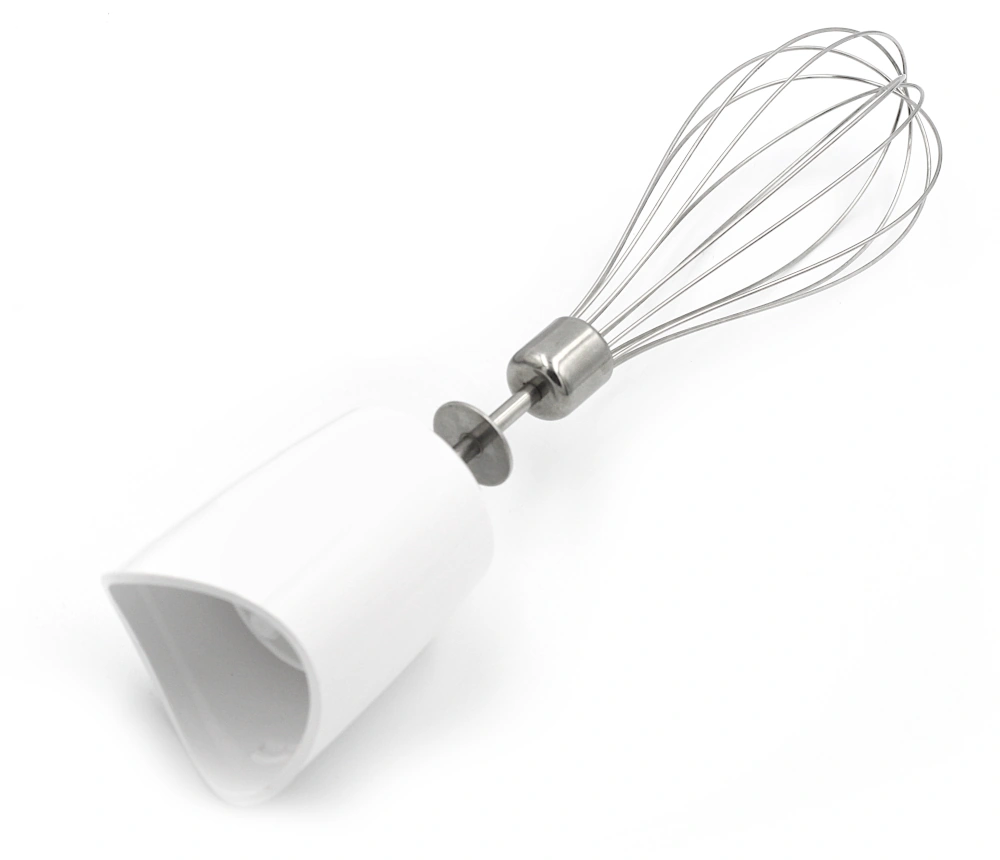
Another whisk substitute is to actually buy an immersion blender that comes with a whisk attachment.
I would say that this is the perfect solution for those who want to use a whisk on an appliance that can make smoothies, creamy soups and a whole bunch of pureed foods.
Getting a hand blender that includes a whisk as an accessory can be the answer that some people are looking for.
You can make desserts, whip egg whites, make whipped cream and other mixtures but you can also make delicious drinks, creamy soups, salsa, chunky soups, smoothies, etc.
The whisk attachment on a blender is easy to use and easy to clean.
It’s the perfect compromise for people with small kitchens who don’t have enough space for a hand mixer, countertop blender and other such appliances.
It’s also great for those who are on a smaller budget, although a very good immersion blender with a whisk attachment will cost between $50 and $100.
What can you use a whisk for?
Whisks or cooking whips are tools made up of a narrow handle on one end and wire loops joined together at the other.
There are two main purposes for using a whisk: to blend ingredients smoothly or to incorporate air into a mixture.
When we incorporate air into a mixture, we can call that whisking or whipping.
The simplest dish you can use a whisk for is to make omelets. However, as we’ve already seen in this article on what can be used instead of a whisk, we can also use a simple fork or a pair of chopsticks for making a delicious, fluffy omelet.
The more challenging task that we use a whisk for is when we want to whip egg whites, when we want to make meringue.
I wouldn’t attempt doing that with a simple whisk because it takes a long time of beating egg whites into stiff peaks and until all the sugar is dissolved. My recommendation is to definitely use a hand mixer, stand mixer, an egg beater with hand crank style or an immersion blender with a whisk attachment.
Heavy cream is also made easily with these tools that I’ve mentioned as perfect whisk substitutes.
I love using actual appliances when it comes to doing things like these and not my actual arm power to quickly move a whisk along a bowl for endless minutes on end.
All in all, I hope you were able to find the perfect answer to the question what can I use instead of a whisk, whether you want to make a simple omelet or more complicated desserts.

